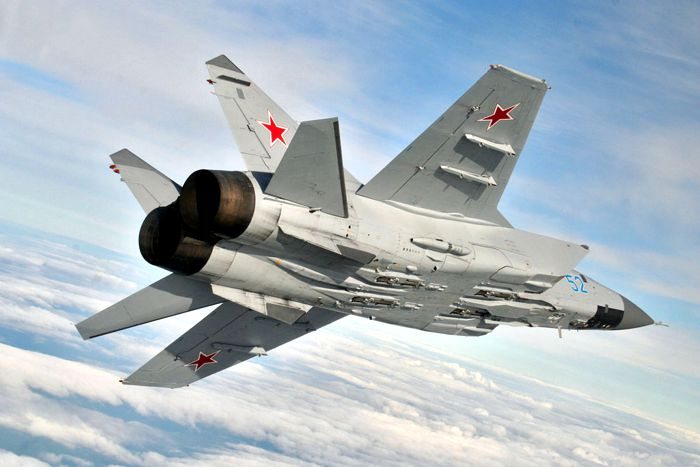The first 24 modernized MiG-31BM fighter jets have been delivered to the Russian Armed Forces. Deputy Defense Minister Yuri Borisov said more than ten aircraft will be delivered to troops ever year.
“After completing the modernization of the MiG-31, we expect that military forces will have more than 130 updated, outstanding aircraft with key technical parameters available for use,” said Yuri Borisov. According to him, about 12-13 aircraft undergo modernization per year.
The deputy minister stressed that Nizhny Novgorod Aircraft Building Plant Sokol, where the modernization of aircraft takes place, is adapting to the program of import substitution. Rostec enterprises are making components for many components of the aircraft.
For example, the upgraded fighters are receiving the new Zaslon-M weapons control and radar system, developed by KRET’s V. Tikhomirov Scientific Research Institute of Instrument Design (NIIP).
While this aircraft was formerly classified only as a long-range interceptor, the modernized MiG can now destroy both air and ground targets. By modernizing its avionics, the efficiency of the MiG-31BM is 2.6 times greater than the MiG-31.
Zaslon-M differs from the original Zaslon radar by its extended antenna, up to 1.4 m in diameter. The detection range of aerial targets has increased to 320 km, and the firing range to 280 km. The onboard radar system of the MiG-31BM can simultaneously track up to ten air targets.
The MiG-31 is a two-person, supersonic, all-weather, long-range fighter jet-interceptor. It is designed to intercept and destroy cruise missiles, low-flying satellites, stealth aircraft, and other aerial targets of all types at all possible altitudes, during day or night, and in adverse weather conditions. A group of four of these aircraft can control the air space of a front line 800-900 km in length.
Mass production of the MiG-31 began in 1979. In early 1992, air defense forces of CIS countries had more than 200 MiG-31 fighter jet-interceptors.
The MiG-31 can break the sound barrier while flying level or ascending, whereas the majority of supersonic aircraft break the speed of sound in a shallow dive. Moreover, the MiG-31 can go supersonic at medium and high altitudes without turning on afterburners.










